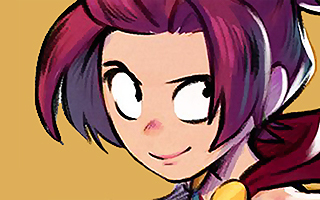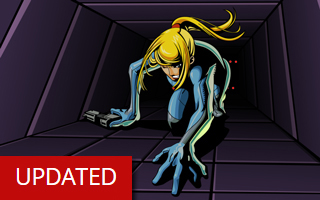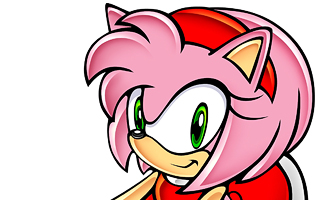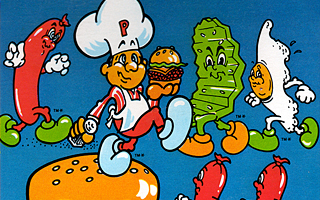Commodore VIC-20
Top 10 Best Commodore VIC-20 Games of All Time!
The Commodore 64 made bigger waves in the gaming world, but the importance of its predecessor cannot be overstated. The $300 price tag made the Commodore VIC-20 one of the world’s first consumer-oriented computers in 1980. Throughout the 1970s, computers had mostly been aimed at professionals or those with a programming background. Commodore’s pricing model was appropriate for retail stores, and the sales numbers spoke for themselves. In fact, the VIC-20 was the first computer to sell over a million units! The computer could only support the most rudimentary business applications, and it obviously wasn’t designed to be a graphics powerhouse. Despite its limitations, the platform was home to many great games. VIC-20 games were released on tapes, floppy disks, and cartridges, and they’ll all be eligible for this list regardless of what format they used.
10
Omega Race
1982

Set in the far-off future of 2003, Omega Race puts players in the cockpit of a spaceship and challenges them to destroy waves of enemy drones. The game is reminiscent of Atari’s Asteroids with respect to its aesthetics and game mechanics. (It employs a monochrome color scheme, your ship is represented by a simple triangle, and the controls allow the player to fire lasers, rotate their ship, or thrust forward.) Capitalizing off of your inertia is the key to succeeding in the game, and you’ll often find yourself moving in one direction while shooting in another. Your ship can bounce off of the invisible barrier that surrounds the screen, and the same thing will happen if you run into the rectangular console in the middle of the screen where your score is displayed. A lot of games set aside space around the edge of the screen to display heads-up information, but it’s unusual for the middle of the screen to be off limits. This setup ultimately makes it more difficult to avoid enemies, and the abundance of walls can turn your ship into a veritable pinball if you’re not careful. The VIC-20 version of Omega Race is a surprisingly accurate arcade port. It lacks proper vector graphics, but it’s a reasonable facsimile. Unlike the Commodore 64 version, the VIC-20 port retains the introduction text from the coin-op. More significantly, the controls were more responsive on the VIC-20 compared to the C64 conversion. At the end of the day, Omega Race is a fun game that paints the VIC-20 in a positive light.
9
Jetpac
1984

I didn’t grow up with British microcomputers, so I didn’t play Jetpac until it was inexplicably included as an Easter egg in Donkey Kong 64. (I might have had more fun playing Jetpac than I did with Donkey Kong 64, if I’m being honest.) Jetpac has the distinction of being Rare’s first game – though technically they were still known as “Ultimate Play the Game” when the game was released. The simple games lets players assume the role of an astronaut who has to assemble a rocket and fuel it up while avoiding an onslaught of colorful aliens. The rocket itself is initially broken up into three large pieces, but it can be difficult to gather them all up because the enemies are so numerous. Fortunately, you can blast the aliens with your laser and give yourself some extra breathing room. Throughout the game, players will also be able to gather up gold, diamonds, and other valuables that occasionally drop from the sky. When Buzz Aldrin played the game in 1984, he described it as the single most realistic depiction of space travel he’d ever seen, and he reportedly pressured NASA to use it for training purposes[citation needed]. Ultimate Play the Game was mostly associated with the ZX Spectrum, and Jetpac was their only VIC-20 game. It’s unfortunate, because I think they could have done great things on the platform.
8
Sword of Fargoal
1984

A dungeon exploration game with light RPG elements and randomly-generated levels, Sword of Fargoal is one of the more complex games available on the VIC-20. The object of the game is to locate the eponymous sword of legend, but this is difficult due to the random dungeon layouts. Complicating things further, the levels are enveloped in darkness until the rooms and corridors are explored. You never know what kind of dangers might be lurking in any given room, and the locations of the treasures and traps are just as unpredictable as the dungeon layouts. (Watch out for exploding chests!) The combat is handled entirely by the computer, but the monsters become more and more dangerous as you advance in the game. Once you eventually locate the famed Sword of Fargoal, your goal is to escape the dungeon without the artifact being stolen from you. The game is initially structured in a way that encourages patience and caution, so it’s interesting how it transforms into a race against the clock. There’s no way to save (or even pause) the game, and guides are unhelpful since the layouts are random. As a result, you’ll be required to make a serious commitment if you ever hope to retrieve the sword. This list is largely defined by space shooters and arcade conversions, so Sword of Fargoal will hopefully add some variety to this countdown.
7
Galaxian
1984

If you’re reading this right now, there’s a pretty good chance that you’re familiar with Galaxian. Like so many games of the era, the basic concept was to shoot down enemy fighters that were invading from above. Two things helped Galaxian stand out when it first hit the arcade scene in 1979. Firstly, it was one of the first games to feature multi-colored sprites. Also, the enemy patterns were decidedly more complex than they were in Space Invaders or any of its many knockoffs. Instead of slowly descending to the bottom of the screen, the enemy fighters would periodically break formation and divebomb the player with kamikaze-like maneuvers. The VIC-20 port doesn’t look as nice as the arcade original and the resolution took a hit, but the gameplay is fast and the controls are responsive. Many of the tricks from the arcade version work on the VIC-20 too! As an aside, whenever I look back at games like Galaxian, I can’t help but be amazed at how much things have changed in the industry from a business standpoint. The original arcade game was made by Namco, the home port was handled by Atari, and it was released on a Commodore platform (and countless others). That would be akin to Nintendo releasing Virtua Fighter on the PlayStation. The business sure has changed over the years, but a game like Galaxian is just as fun as it ever was.
6
Dragonfire
1983

In Dragonfire, players take on the role of a young prince on a mission to recover the king’s treasure from fire-breathing dragons. Each stage is divided into two parts. In the first section, players have to cross a draw bridge while avoiding flying arrows and dangerous fireballs. The second part of each stage tasks players with retrieving treasures from inside the castle before escaping from the aforementioned dragons. This two-part stage is basically repeated over and over again, but players will have to contend with more arrows and smarter dragons as they advance through the game. The dragons will start breathing fire so fast that they’ll make the treasure rooms feel like a bullet curtain shooter! Imagic did a great job of working within the limits of the VIC-20, and the graphics show a surprising level of detail. The animation is fantastic (I especially like the way the prince frantically kicks his feet when he jumps) and the dragons actually look like dragons! Menacing dragons are much more compelling than generic space aliens, and I think we can all agree that there weren’t nearly as many medieval-themed games on the VIC-20 as there should have been.
5
Salmon Run
1983

In Salmon Run, players assume the role of a salmon who is attempting to swim upstream in order to find a mate. It’s a high-stakes mission, to be certain, and things are not easy for the poor fish. During his journey, he has to contend with fishermen, seagulls, and way too many bears. Pretty much everything he encounters wants to eat him. The environment itself is full of hazards, too. Bumping into the river banks will slow his progress, and carefully-timed jumps are required to climb the rapids. The salmon can dive underwater to avoid predators, but his enemies are unrelenting in their desire to catch him. If the salmon survives and makes it to the spawning grounds, he is rewarded with a kiss from his mate. That’s a strange thing for fish to do, and I’m starting to think that Salmon Run isn’t entirely realistic! Nevertheless, it’s still a better love story than Twilight. Salmon Run received high praise upon its release for being remarkably lifelike, and a vibrant river is definitely a nice change of pace from the stark black backgrounds that were so prevalent on the VIC-20.
4
Jelly Monster
1981

It’s almost becoming cliche to highlight a version of Pac-Man on these lists, but it truly was a game that defined an entire generation. Moreover, Pac-Man was simple enough for nearly every platform to support, so it was ported to almost every system imaginable. (You eat dots, avoid ghosts, rinse, lather, and repeat. What’s not to get?) Jelly Monsters is a remarkably faithful port of Pac-Man that was developed by HAL Laboratory. The company had obtained the rights to make home computer ports of Namco’s arcade games in Japan, but Atari secured the rights in North America. HAL Laboratory and Commodore decided to release the game outside of Japan anyway, and they simply changed the name to Jelly Monsters in order to avoid litigation. In response, Atari filed a lawsuit and eventually won their case. Jelly Monsters was then recalled and Atari filled the void with their own version of Pac-Man. Atari absolutely deserved to win the case, but their official version of Pac-Man for the VIC-20 wasn’t nearly as good as HAL’s Jelly Monsters. The whole thing was later revealed to be a calculated move on the part of Commodore founder, Jack Tramiel. Tramiel knew they’d be sued by Atari and even set money aside in advance to pay the damages. He also knew that he needed a high-profile title to propel the VIC-20 forward, so he figured the penalties would be worth it. The real winners were the VIC-20 owners who got their hands on Jelly Monsters before it was pulled from the store shelves.
3
Demon Attack
1983

Demon Attack is a space-themed shooter that could be likened to Galaxian or Phoenix. The object of the game is to shoot down waves of bird-like demons that descend from the top of the screen. New enemy weapons are introduced with each wave, however, and your foes have the ability to split into two smaller demons in the later stages. The enemy patterns are decidedly more erratic and unpredictable than most games in the genre, and this is ultimately what made the game so addictive. Demon Attack is widely considered to be among the best Atari 2600 games of all-time, and I’m happy to report that the VIC-20 port is an excellent conversion that bares a strong resemblance to its Atari cousin. Things like multi-colored sprites and smooth animations were not always guaranteed on the VIC-20, but this wasn’t a problem for the folks at Imagic because they were obviously wizards. Imagic was one of the most underrated developers of the early 1980s, and its unfortunate that the market crash cut them off at the knees.
2
Laser Zone
1983

Following the release of Space Invaders in 1978, the entire industry was overrun with games that followed a similar formula. These titles typically put players in control of a ship on the bottom of the screen and tasked them with shooting down alien invaders that would descend from above. Jeff Minter’s Laser Zone put an interesting spin on this concept, however. Although players still controlled a ship on the bottom of the screen, they also controlled a second ship that was situated on the right side of the screen. Being able to control two ships at once (and having the ability to fire vertically or horizontally) literally added a new dimension to a timeworn genre. The enemy fights are relentless as they advance, and Laser Zone is the type of game that demands your concentration at all times. You have to pay attention to the entire screen, since enemies will attack you on different fronts. It’s intimidating at first – especially since you have to control both ships with a single joystick – but everything becomes second nature once you get the hang of it. If you’re a fan of frenetic action, you can’t do much better than Laser Zone. It would have made a mint if it had been released in arcades.
1
Attack of the Mutant Camels (aka: Matrix: Gridrunner 2)
1983

In the early ’80s, it was customary for game developers to borrow elements from established arcade games. Drawing inspiration from Centipede, Gridrunner featured large, segmented enemies that would move around the screen in a zig-zag fashion. The enemies could be broken up into smaller sections, and their progress could be impeded by “pods” that were scattered across the playing field. At the time, Atari’s lawyers were cracking down on Centipede clones, so Jeff Minter knew that his game needed a unique hook. The movement of the enemies in Gridrunner was tied to a visible grid, and the player’s ship was also free to move around this same grid. (Similar games typically confined players to the bottom of the screen, so Gridrunner felt a lot less restrictive in that sense.) The object of each stage was to defeat the waves of enemies, but things were complicated by horizontal and vertical lasers that would periodically pulsate across the screen. Jeff Minter correctly reasoned that lasers made everything better, and they added another element of tension to the game. Gridrunner was significantly faster than Centipede, and it’s easily one of the most intense games on the VIC-20. It’s also vastly superior to the Commodore 64 port, and it truly felt that the game was tailor-made for the VIC-20. Matrix: Gridrunner 2 introduced new enemy types, a scrolling background, and mutant camels that could divert the player’s shots. Llamasoft opted to rename Matrix as Attack of the Mutant Camels for the US market, but it should not be confused with another, unrelated game from Llamasoft that was also called Attack of the Mutant Camels. No matter what you call it, the sequel to Gridrunner is deserving of its place on top of this list.





Do you agree with this list? Let us know what you think by leaving a comment below. Your opinion matters!